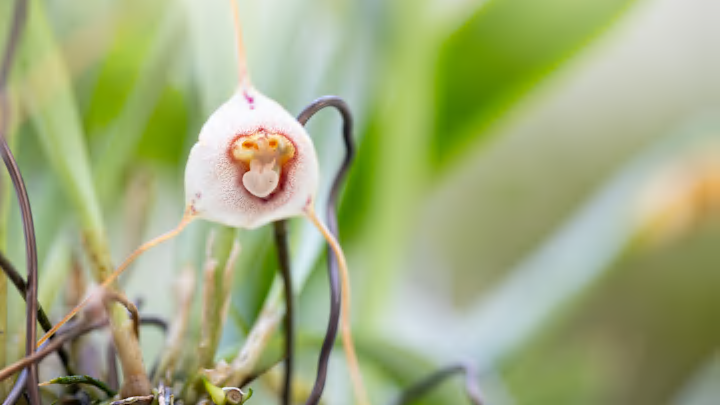In the northwestern tropical rainforests of South America lie “monkey face orchids.” These flowers look exactly as you might think; they appear to have faces resembling those of small primates. Monkey face orchids (also known as Dracula orchids in the scientific community) have gained widespread popularity online, but the species is struggling to survive.
A Threatened Population

An update from the International Union for Conservation of Nature, the source of global extinction risk statuses for animal, fungal, and plant species, has labeled most of these flowers as under threat. A team of botanists from Colombia and Ecuador, who led the new assessment, found that nearly seven in 10 monkey face orchids out of the 133 species studied face the possibility of extinction.
Many of these flowers can only grow in specific parts of the Andean cloud forests of Colombia and Ecuador. Some can only be found in agricultural settings. This is because they need a cool, misty environment at mid- to high-altitudes to thrive.
You May Also Like:
- Want to Pick the Perfect Pumpkin? Here’s What to Look For
- Map Shows the Houseplant Each State Is Searching for Most
- Is Jumping in Leaf Piles Safe?
Add Mental Floss as a preferred news source!
These habitats are already rare in nature, and human activity is making them more scarce. They’re being cleared for agriculture, cattle raising, road expansion, and more. Dracula orchids are susceptible to environmental changes, so major shifts in light, temperature, and humidity can easily wipe them out.
Another reason for their declining numbers is flower collectors. Some seek monkey face flowers for their beauty and rarity. Plucking a few Dracula orchids may not seem like a big deal—but one collector can significantly impact such a small population.
What Can Be Done?

The future of monkey face orchids is worrisome, but all hope isn’t lost. Local organizations and communities are teaming up to push sustainable agricultural methods, bolster ecotourism, and offer financial incentives for ecosystem-protecting services. Raising awareness of these beautiful but vulnerable botanicals is another way to encourage their survival.
